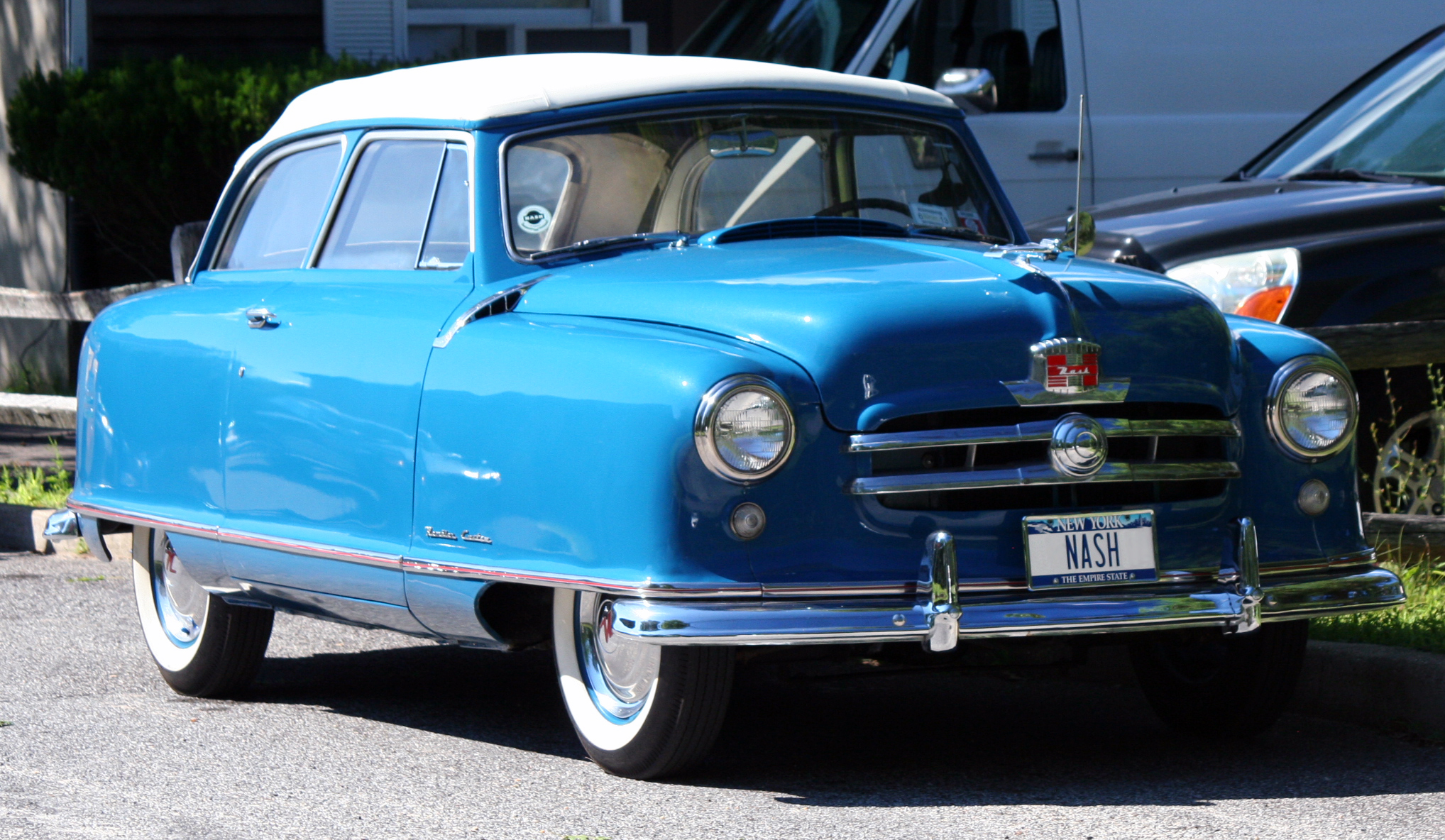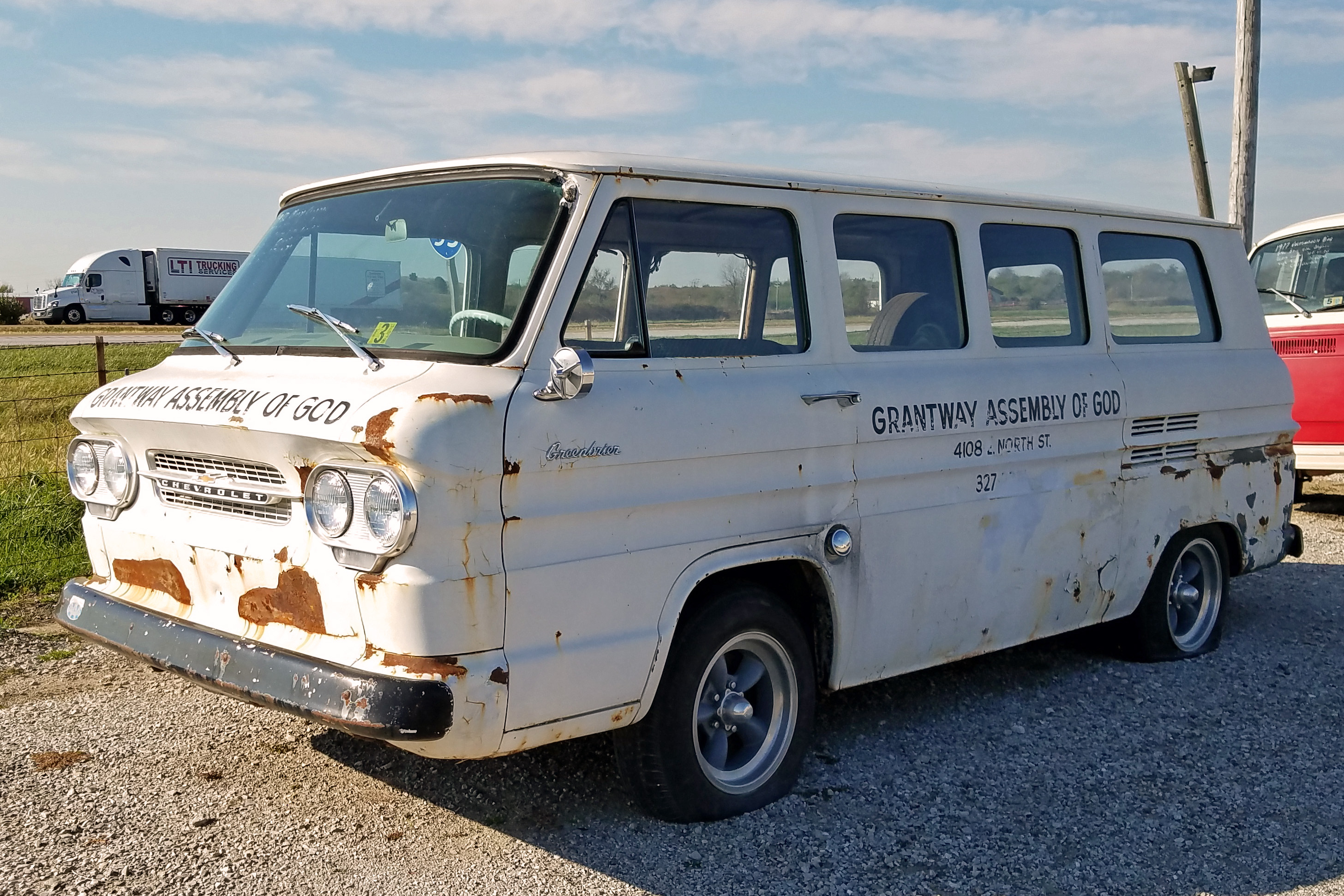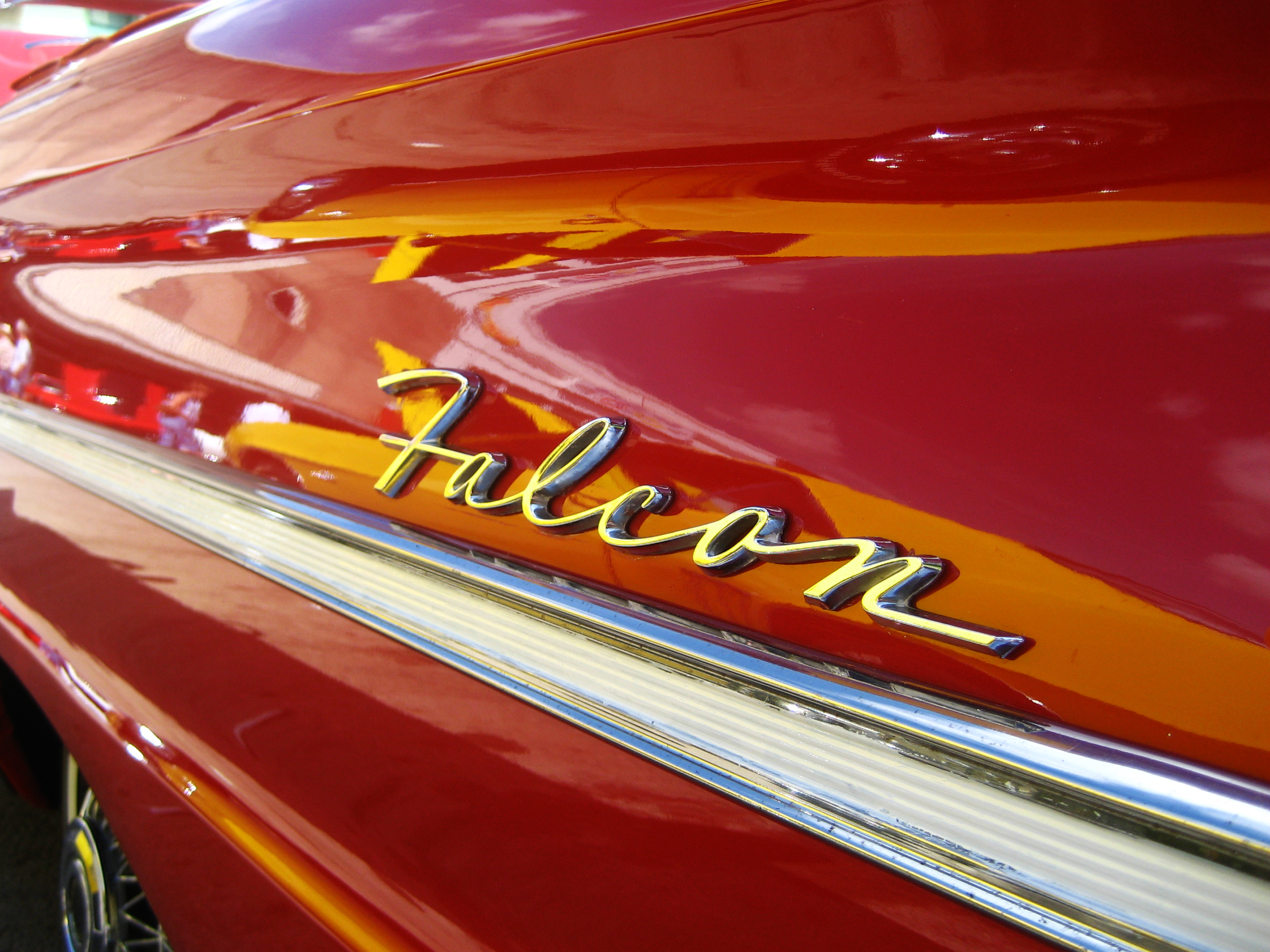|
Compact Car
Compact car is a vehicle size class—predominantly used in North America—that sits between subcompact cars and mid-size cars. "Small family car" is a British term and a part of the C-segment in the European car classification. However, before the downsizing of the United States car industry in the 1970s and 1980s, larger vehicles with wheelbases up to were considered "compact cars" in the United States. In Japan, small size passenger vehicle is a registration category that sits between kei cars and regular cars, based on overall size and engine displacement limits. United States Current definition The United States Environmental Protection Agency (EPA) ''Fuel Economy Regulations for 1977 and Later Model Year'' (dated July 1996) includes definitions for classes of automobiles. Based on the combined passenger and cargo volume, compact cars are defined as having an ''interior volume index'' of . 1930s to 1950s The beginnings of U.S. production of compact cars were the ... [...More Info...] [...Related Items...] OR: [Wikipedia] [Google] [Baidu] |
Toyota Corolla
The is a series of compact cars (formerly Subcompact car, subcompact) manufactured and marketed globally by the Japanese automaker Toyota Motor Corporation. Introduced in 1966, the Corolla was the best-selling car worldwide by 1974 and has been one of the best-selling cars in the world since then. In 1997, the Corolla became the List of best-selling automobiles, best-selling nameplate in the world, surpassing the Volkswagen Beetle. Toyota reached the milestone of 50 million Corollas sold over twelve generations in 2021. The name ''Corolla (headgear), Corolla'' is part of Toyota's naming tradition of using names derived from the Toyota Crown for sedans, with ''"wikt:corolla, corolla"'' Latin for "small crown". The Corolla has always been exclusive in Japan to ''Toyota Corolla Store'' locations, and manufactured in Japan with a twin, called the Toyota Sprinter until 2000. From 2006 to 2018 in Japan and much of the world, and from 2018 to 2020 in Taiwan, the hatchback companion h ... [...More Info...] [...Related Items...] OR: [Wikipedia] [Google] [Baidu] |
Hudson Jet
The Hudson Jet is a Compact car, compact-sized automobile produced by the Hudson Motor Car Company of Detroit, Detroit, Michigan, during the 1953 and 1954 model years. The Jet was the automaker's response to the popular Nash Rambler. The costs of developing and marketing the Jet, along with the fierce competition from the domestic "Big Three (automobile manufacturers), Big Three" automakers, ultimately led to Hudson's merger with Nash to establish the American Motors Corporation in 1954. Background The U.S. automakers were unsure about the post-World War II economy, and even Chevrolet and Ford made plans to develop economical, small-sized models. The devastation in Europe and Asia contrasted with the pent-up consumer market in the U.S. The Hudson Motor Car Company was one of several independent firms competing with the much larger "Big Three" U.S. automakers (General Motors, Ford, and Chrysler) that produced mainly "standard" large-sized models. Their conventional cars were ... [...More Info...] [...Related Items...] OR: [Wikipedia] [Google] [Baidu] |
Dodge A100
The A100 is a range of compact vans and trucks manufactured and marketed from 1964 to 1970 by Chrysler Corporation under the Dodge marque in the United States and the Fargo marque in Canada. The A100 competed with the Ford Econoline, Chevrolet Van, Chevy Corvair Greenbrier, and the Volkswagen Type 2. The range included a pickup truck and van, both with a " forward control" design. Placing the driver on top of the front axle with the engine between the front seats, just behind the front wheels makes it a "cab over" vehicle. The unibody vehicles used a short wheelbase. An A108 was also available from 1967 to 1970, with a longer wheelbase. The A108 was popular with camper conversion companies. A substantially modified, Hemi-powered A100 wheelstanding exhibition pickup called the "Little Red Wagon" driven by Bill "Maverick" Golden was a popular drag strip attraction from the 1960s to the early 2000s. Engines *1964–1966 170 in3 (2.8 L) '' Slant-6'' I6, *1970 ... [...More Info...] [...Related Items...] OR: [Wikipedia] [Google] [Baidu] |
Ford E-Series
The Ford E-Series (also known as the Ford Econoline, Ford Econovan or Ford Club Wagon) is a range of full-size vans manufactured and marketed by the Ford Motor Company. Introduced for 1961 as the replacement of the Ford F-Series panel van, four generations of the model line have been produced. Marketed for both cargo and passenger transport, the E-Series has had multiple designs for both retail and commercial sale, including vans, and commercial-grade cutaway van chassis and stripped chassis (a chassis without bodywork). With over 8.2 million units sold since 1961, the Ford E-Series is the third-best selling van line in history (outranked only by the Ford Transit and Volkswagen Transporter). Ford retired the E-Series passenger and cargo vans after 2014, replacing them with the Ford Transit. The E-Series remains offered exclusively in cutaway and stripped-chassis configurations. In 2021, the model line became the second existing Ford line to enter its 60th year of production. ... [...More Info...] [...Related Items...] OR: [Wikipedia] [Google] [Baidu] |
Chevrolet Greenbrier
The Chevrolet Corvair 95 is a subseries of the Chevrolet Corvair line produced from 1961 until 1965. It is the general term applied to the van and pickup truck variants of the rear-engined Corvair, named for their shortened wheelbase. It was Chevrolet’s first attempt at a van as well as their first and only van-based pickup truck in North America. __TOC__ Overview Chevrolet introduced the Corvair lineup for the 1960 model year as the first of a series of generations of passenger compact cars. Chevrolet introduced a more utilitarian style of vehicle the following year under the model designation "Corvair 95". In appearance and design, the cars were similar to the competing Volkswagen Transporter, which was essentially a bus-like adaptation of the Volkswagen Beetle that moved the driver over the front wheels, known as ''forward control'' or ''cab-over''. The Air cooling, air-cooled horizontally opposed Chevrolet Turbo-Air 6 engine was located in the rear of the vehicle under ... [...More Info...] [...Related Items...] OR: [Wikipedia] [Google] [Baidu] |
Compact Van
A compact van is a type of van characterized by a flat front design, mechanicals based on a compact car, an engine placed either at the rear or between and behind the front seats, and similar in size to the VW Bus. Popular in the United States during the early 1960s, they were replaced by full-size vans at the end of the decade. These large vans used body-on-frame construction and featured front engines under a short hood. Microvans In Japan, vans that comply with Kei car regulations are known as microvans. Examples * Dodge A100 * Ford E-Series (first generation) * Chevrolet Greenbrier * Chevrolet Van (first and second generations) * Lloyd LT 500 Gallery File:OldChevyVan.jpg, First generation of Chevrolet Van with flat windshield The windshield (American English and Canadian English) or windscreen (Commonwealth English) of an aircraft, car, bus, motorbike, truck, train, boat or streetcar is the front window, which provides visibility while protecting occupa ... [...More Info...] [...Related Items...] OR: [Wikipedia] [Google] [Baidu] |
Plymouth Valiant
The Plymouth Valiant (first appearing in 1959 as simply the Valiant) is an automobile which was marketed by the Plymouth division of the Chrysler Corporation in the United States from the model years of 1960 through 1976. It was created to give the company an entry in the compact car market emerging in the late 1950s and became well known for its excellent durability and reliability. It was one of Chrysler's best-selling automobiles during the 1960s and 1970s helping to keep the company solvent during an economic downturn. ''Road & Track'' magazine considered the Valiant to be "one of the best all-around domestic cars". The Valiant was also built and marketed, with or without the Plymouth brand, worldwide in countries including Argentina, Australia, Brazil, Canada, Finland, Mexico, New Zealand, South Africa, Sweden, and Switzerland, as well as other countries in South America and Western Europe. Its compact size, by American standards, allowed it to be sold as a large car in Eu ... [...More Info...] [...Related Items...] OR: [Wikipedia] [Google] [Baidu] |
Ford Falcon (North American)
The Ford Falcon is a model line of cars that was produced by Ford from the 1960 to 1970 model years. Though preceded by the Rambler American, the Falcon was the first compact car marketed by the Big Three American manufacturers. In contrast to its Chevrolet Corvair and (Plymouth) Valiant competitors, the Falcon was developed as a scaled-down version of the full-size Ford Galaxie sedan. Alongside its larger counterparts, the Falcon offered a full range of body styles, including two-door and four-door sedans, two-door hardtops and convertibles, two-door and four-door station wagons (the former, serving as a basis of the final Ford sedan delivery), and coupe utility pickups (serving as the basis of the Ford Ranchero). Through the 1960s, Ford would produce three distinct generations of the Falcon; a final version of the Falcon served as the lowest-price version of the Ford Torino. For nearly two decades, the model architecture used by the Falcon was used by eleven Ford vehicle ... [...More Info...] [...Related Items...] OR: [Wikipedia] [Google] [Baidu] |
Chevrolet Corvair
The Chevrolet Corvair is a Rear-engine design, rear-engined, Chevrolet Turbo-Air 6 engine, air-cooled compact car manufactured and marketed by Chevrolet over two generations between 1960 and 1969. A response to the Volkswagen Beetle, it was offered in 4-door sedan, 2-door coupe, convertible and 4-door station wagon in its first generation (1960–1964), and as a 2-door coupe, convertible or 4-door hardtop in its second (1965–1969). It was also offered as a subseries known as the Chevrolet Corvair 95, Corvair 95 (1961–1965), which consisted of a passenger van, commercial van, and pickup truck variant. Total production was approximately 1.8 million vehicles from 1960 until 1969. The name "Corvair" was first applied in 1954 to a Corvette-based concept with a hardtop fastback-styled roof, part of the General Motors Motorama, Motorama traveling exhibition. When applied to the production models, the "air" part referenced the engine's cooling system. A prominent aspect of the Cor ... [...More Info...] [...Related Items...] OR: [Wikipedia] [Google] [Baidu] |
Studebaker Lark
The Studebaker Lark is a compact car that was produced by Studebaker from 1959 to 1966. From its introduction in early 1959 until 1962, the Lark was a product of the Studebaker-Packard Corporation. In mid-1962, the company dropped "Packard" from its name and reverted to its pre-1954 name, the Studebaker Corporation. In addition to being built in Studebaker's South Bend, Indiana, home plant, the Lark and its descendants were also built in Hamilton, Ontario, Canada, from 1959 to 1966 by Studebaker of Canada Limited. The cars were also exported to a number of countries around the world as completed units and completely knocked down (CKD) kits which were then assembled at a local factory. Lark-based variants represented the bulk of the range produced by Studebaker after 1958 and sold in far greater volume than the contemporary Hawk and Avanti models. Beginning with the 1963 Cruiser, the Lark name was gradually phased out of the company catalog and by early 1964, Lark-based models ... [...More Info...] [...Related Items...] OR: [Wikipedia] [Google] [Baidu] |
Recession Of 1958
The recession of 1958, also known as the Eisenhower Recession, was a sharp worldwide economic downturn in 1958. The effect of the recession spread beyond the United States to Europe and Canada, causing many businesses to shut down. Officially, recessionary circumstances lasted from the middle of 1957 to April 1958. Though it is generally regarded as a moderate recession, it was the most significant recession during the post–World War II economic expansion between 1945 and 1973. Causes There were many major factors in the decline that exerted a growing downward pressure on production and employment, resulting in a general reduction of economic activity. New car sales took a sharp dive as middle-class consumers decided to keep their cars for longer instead of upgrading after a few years. Auto sales fell 31% over 1957, making 1958 the worst auto year since World War II. In just three years, car sales fell from almost 8 million purchases in 1955 to 4.3 million purchases in 1958. In ... [...More Info...] [...Related Items...] OR: [Wikipedia] [Google] [Baidu] |
Sedan (car)
A sedan (American English) or saloon (British English) is a automobile, passenger car in a three-box styling, three-box configuration with separate compartments for an engine, passengers, and cargo. The first recorded use of ''sedan'' in reference to an automobile body occurred in 1912. The name derives from the 17th-century Litter (vehicle), litter known as a sedan chair, a one-person enclosed box with windows and carried by porters. Variations of the sedan style include the close-coupled sedan, club sedan, convertible sedan, fastback sedan, hardtop sedan, notchback sedan, and sedanet. Definition A sedan () is a car with a closed body (i.e., a fixed metal roof) with the engine, passengers, and cargo in separate compartments. This broad definition does not differentiate sedans from various other car body styles. Still, in practice, the typical characteristics of sedans are: * a Pillar (car), B-pillar (between the front and rear windows) that supports the roof; * two rows of s ... [...More Info...] [...Related Items...] OR: [Wikipedia] [Google] [Baidu] |









